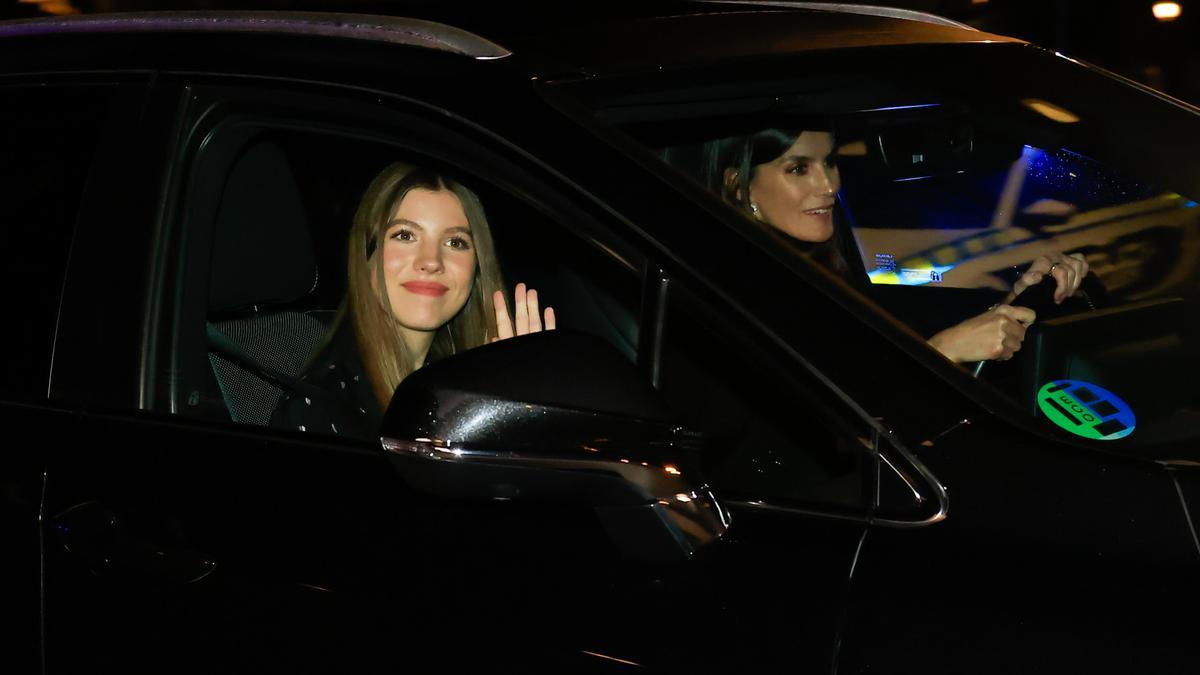Princess Leonor, the heir to the Spanish throne, has once again captured the attention of the media, not for her official duties or her rigorous military training, but for her recent nightlife escapades.

Reports of her being spotted at nightclubs have sparked international headlines and shone a light on a more relatable, youthful side of the princess. According to the Dutch outlet Royalty, Leonor was seen enjoying an evening out at a popular nightclub, with bold headlines describing her as “going wild.”
This portrayal has drawn widespread attention, as it depicts a more relaxed and approachable image of a future queen who, while committed to her royal responsibilities, also seeks to embrace her youth.
The outlet reports that Princess Leonor had ventured out with friends from her military academy, where she is currently undergoing her training. Since starting her academic journey, Leonor has occasionally been seen enjoying the social scene in Pontevedra, surprising locals with her nightlife appearances.
Notably, the outlet claims she has been seen frequenting bars and nightclubs in the area, with some establishments staying open as late as 6 a.m. These outings are said to be part of her effort to build camaraderie with her peers and experience a semblance of normalcy amid her otherwise regimented life.
In one particularly talked-about incident, videos allegedly capturing the princess during one of these nights out surfaced online, further fueling media interest. While such social activities might be considered typical for a young woman of her age, the logistics of Leonor’s outings are far from ordinary.
Every excursion is meticulously planned, with strict security measures in place to ensure her safety and privacy. These measures include notifying venues and staff of her arrival in advance, leaving no room for last-minute changes.
Additionally, Leonor is always accompanied by an escort, setting her apart from other young people her age and highlighting the unique challenges of balancing a royal life with normal teenage experiences.
These security protocols have reportedly become more frequent as Leonor integrates with peers from her generation at the military academy. Together, they organize group dinners, excursions, and occasional nights out.
Earlier this year, news broke that Leonor had enjoyed a simple meal at a burger joint in Vigo, opting for a truffle carbonara burger and loaded fries—an outing that garnered attention for its simplicity and relatability.

Such moments, while seemingly mundane, offer a glimpse into the princess’s efforts to connect with the world outside her royal bubble.
Meanwhile, Queen Letizia has played a significant role in shaping the environment surrounding her daughters.
The Queen’s influence is evident in recent structural changes within the Spanish Royal House, which aim to modernize the monarchy and prepare Leonor and her younger sister, Sofia, for their eventual roles.
King Felipe VI, reportedly inspired by Letizia’s vision, has overseen key appointments within the Royal Household, including the promotion of four women to prominent positions.
These appointments, such as Mercedes Araujo Díaz de Terán as General Secretary and María Ocaña as Head of the Queen’s Secretariat, signify a shift towards greater gender parity and reflect the royal family’s commitment to evolving with the times.

According to the German publication Bunte, these changes may also pave the way for Leonor and Sofia to step into modernized roles within the monarchy.
The emphasis on reform and inclusion is seen as a strategic effort to ensure the continuity of a monarchy that resonates with contemporary societal values. However, balancing tradition with modernity comes with its challenges, particularly as Leonor navigates public scrutiny.
Leonor’s recent social activities have sparked divided opinions, with some seeing them as a refreshing reminder of her relatability, while others question the appropriateness of such outings for a future queen.
The controversy surrounding her nightclub appearances, for example, underscores the difficulty of managing public expectations. Reports of alleged tensions during one outing—where heightened security measures included the confiscation of phones to prevent leaks—highlight the complexities of her position.

Such incidents have sometimes led to criticism, with claims that Leonor’s security detail imposes overly strict measures, inadvertently drawing more attention to her presence.
Yet, these episodes also showcase a young woman trying to balance the weight of her institutional responsibilities with moments of personal freedom.
Despite the occasional backlash, they reflect a broader effort by her parents, King Felipe VI and Queen Letizia, to prepare their daughter for a future that requires both accessibility and gravitas.
Leonor’s public and private personas are being carefully shaped to meet the dual demands of connecting with the citizenry and upholding the dignity of her future role.
The public’s fascination with Leonor extends beyond her social life to her institutional contributions. Her military training, for instance, has been widely praised as a testament to her dedication to her future duties.
By undertaking this rigorous path, Leonor is following in the footsteps of other European royals who have sought to bridge the gap between monarchy and the military, demonstrating resilience and commitment.

At the same time, her occasional departures from protocol—whether through her choice of leisure activities or her interactions with peers—serve as reminders that she is still a young woman exploring her identity.
The delicate balance between institutional expectations and personal freedom is further exemplified in the broader dynamics of the Spanish royal family.
Queen Letizia’s reformist approach contrasts with the traditional image often associated with monarchy, highlighting the evolving nature of the institution. These changes, while necessary, are not without their critics.
Some traditionalists argue that too much modernization risks diluting the monarchy’s historical significance, while others see these efforts as essential for maintaining relevance in a rapidly changing society.
Leonor’s story also resonates with broader themes of youth, privilege, and responsibility. As a member of the younger generation of European royals, she represents a new wave of leadership that seeks to engage with contemporary issues while respecting centuries-old traditions.

Her ability to navigate this complex landscape will likely define her reign and influence how future monarchies are perceived.
In conclusion, Princess Leonor’s recent nightlife appearances and the ensuing media coverage underscore the challenges of balancing royal duties with personal growth.
These moments offer a glimpse into the life of a future queen who, despite her extraordinary circumstances, is striving to remain relatable and grounded.
Supported by a forward-thinking family and guided by her own experiences, Leonor is gradually carving out a path that blends the demands of her institutional role with the realities of her age and generation.
As she continues to navigate this journey, the lessons she learns and the decisions she makes will undoubtedly shape not only her future reign but also the broader perception of the Spanish monarchy in the years to come.





